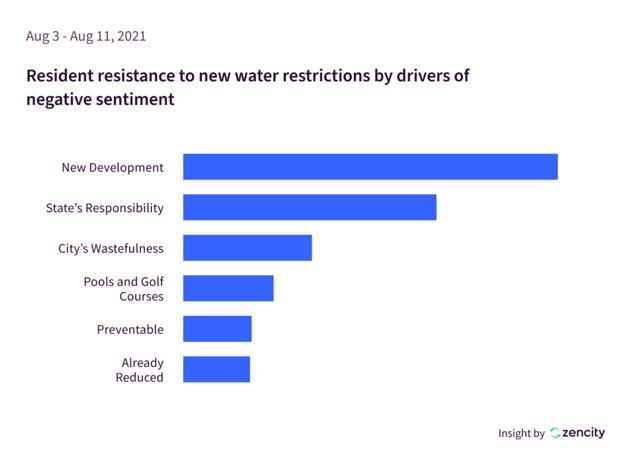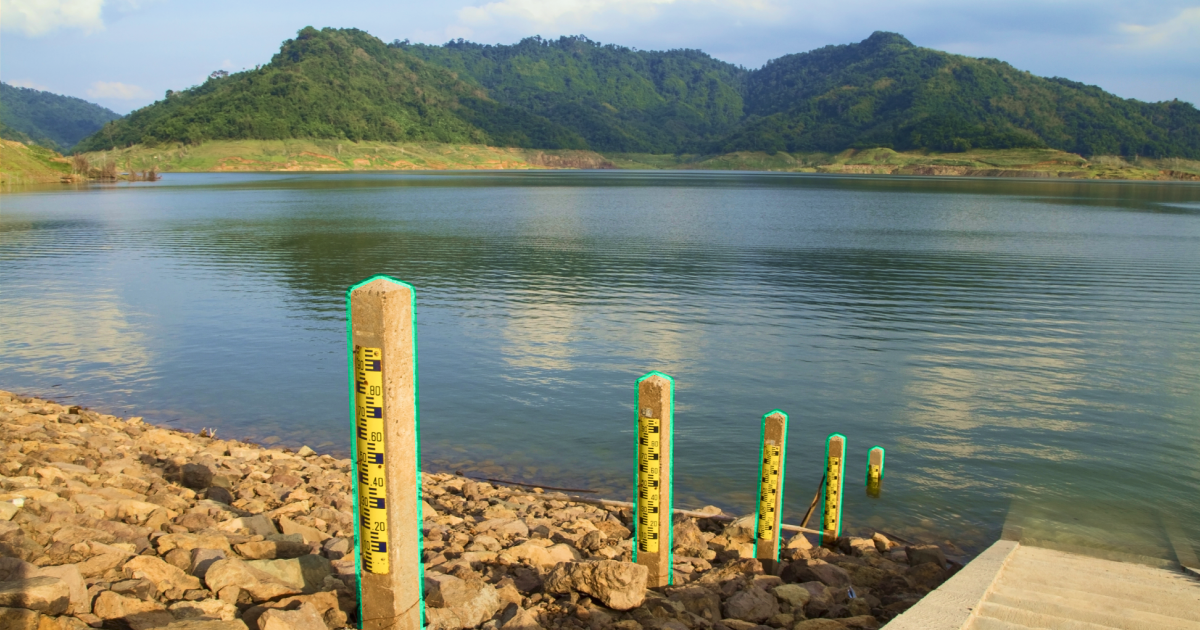Can new messaging boost your city or county’s water conservation efforts?
.png)
Zencity
The Platform for Community Trust
It’s no secret that America is experiencing extreme weather events nation-wide. Among them are severe droughts in the West, Plains, and Midwest areas of the United States, as well as in Hawaii. While some states, such as the State of California, have struggled with threats of drought and water shortages for decades, today water shortages have become a serious threat across the United States. Climate changes causing dry weather conditions and extreme heat have affected supply, while population growth and usage trends are affecting demand. In fact, the Environmental Protection Agency predicts that by 2024, 40 states will be experiencing water shortages. Compounding the problem is a snowball effect caused by drought conditions: they contribute to an increase in wildfires seen in the West, to crop failures, and to economic struggles for farmers.
Local government leaders are working to find creative and effective solutions to water shortages, and getting residents on board with water regulations is critical. Yet despite their efforts, many cities and counties face another widespread challenge: backlash from residents who feel that while they’re trying to do their part, the government is falling short. Notably, the problem doesn’t seem to be the restrictions themselves—many residents feel that they are, and should be, doing their part—but rather, pushback stems from the perception that the government isn’t doing its part. Zencity recently issued a data report on community feedback to water conservation, which looks at overall resident responses to conservation efforts, and especially at the drivers of resident criticism over local government efforts.
Based on the findings in the data report, we’ve identified three ways city and county managers can adapt their messaging and their efforts around water conservation to mitigate resident concerns and bring their communities on board.
How to improve resident goodwill towards water regulations
In drought-plagued areas, one of the challenges local leaders face is maintaining goodwill among residents while effectively communicating new and existing water regulations. After all, happy residents are more likely to cooperate. Here are three tips for city and county managers on how to shape and convey restrictions.
Tip #1: When it comes to water regulations, lead by example
With 88% of California under extreme drought conditions, residents are frustrated by the water restrictions that are often imposed on them. But the frustration isn’t borne of the restrictions themselves, but rather by a perceived mismanagement and poor decision making on the government’s part. In one California Zencity, many residents wondered why new housing and commercial developments were being approved when water was so scarce. Other residents pointed to the City’s own wastefulness when it comes to water, such as ineffective sprinklers and over-watered public grounds. And others wondered why water scarcity hadn’t been addressed long ago.

Interestingly, one driver of negativity was the City’s lack of communication on official channels regarding the new developments and the use of water. In other words, residents were looking to the City to acknowledge their role in water shortages and to present a solution.
For local governments facing water shortages, this is a key takeaway: residents are looking to city and county managers to lead by example, to provide open lines of communication in order to address resident concerns, and to show that we’re all in this together. To do this, actively communicate about what your local government organization is doing to help conserve water.
Tip #2: Eliminate double standards in water restrictions
While water shortages are a problem across the United States, some communities are airing an extra layer of grief: an either existing or perceived double standard has come into play whereby residents are expected to comply by one set of rules, and tourists—and the businesses that support them—are seemingly exempt. In one Zencity tourist destination, the reaction to water regulations that have been imposed has been almost unanimous: “Tell that to the hotels!”
As water shortage problems persist, some municipalities are beginning to impose stricter rules on commercial properties, such as requiring them to reduce usage by 10%. While some cities may hesitate to add an additional burden to businesses that are already suffering because of the Covid-19 pandemic, doing so may actually have a positive effect. Not only can it create goodwill in the community, it may even be a welcome imposition by business owners who are already making those water-saving efforts on their own.
The takeaway here is that a little explanation can go a long way. Whether showing the rationale behind certain restrictions, or addressing perceived double standards head-on, explanations can help residents better understand why measures are being put in place, and can help prevent negative resident sentiment from building up.
Tip #3: Offer solutions, not just restrictions
One frustration many residents share is that they feel restrictions are not necessarily long-term solutions. When solutions are proposed, resident sentiment is usually positive. In Herriman, UT, for example, local government leaders paused new landscaping requirements on single family homes until cooler weather arrived. The move garnered support from residents, who appreciated the consistency in water-saving measures. The City also shared on official channels the ways it was planning to cut back its own water usage, encouraged residents to report any water misuse, and continues to update residents on its water conservation efforts.

And in a Texas Zencity, residents are responding positively to creative solutions offered by leaders to help ease water restrictions. These include a rainwater harvesting rebate and financial assistance to vulnerable populations who may suffer from water bill hikes. For cities looking to maintain positivity while imposing inevitable water restrictions, offering residents assistance and creative solutions is key.
The takeaway from these cities is clear: water conservation works better when it’s a team effort, and that team is both the city and its residents. Don’t shy away from showing how your city is doing its part in making responsible water use decisions.
Water shortages are here to stay—solutions should mirror that
One of the main takeaways from Zencity’s water conservation data report is that residents are looking to city and county leaders for long-term solutions, not just quick fixes. As water shortages increase and restrictions expand, citizens feel that it’s time for local governments to step up rather than continue to impose stricter and stricter regulations without a long-term plan. While some water conservation efforts are imposed at the state level—along with potential solutions—for local governments, these insights present an opportunity to better connect to resident needs, address their concerns, and find collaborative ways to tackle water usage.
%20copy-1.png?width=544&height=120&name=Logo_black%20(1)%20copy-1.png)



